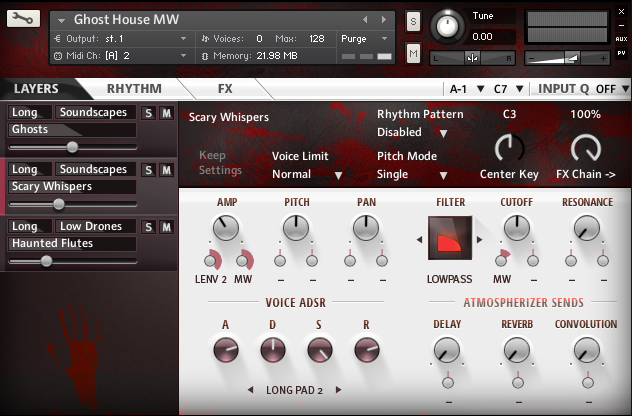

It loads and runs Lua scripts that have been created in a text editor and saved to disk. The Instrument Editor connects to a running instance of Kontakt, either plug-in or standalone, and offers programmatic access to parts of a Kontakt instrument’s structure through Lua-based scripting. Filter by text (characters in the Message column).

Custom kontakt library creator 2.1 manual#
Please also refer to the KSP Reference Manual for more details. įor example watch_var($count) inspects the value changes of the variable count and watch_array_idx(%volume,5) inspects the value changes of index 5 of the array volume. Inspecting a variable or array is possible via the dedicated KSP commands watch_var and watch_array_idx. All value changes appear also in the Log above, in chronological order. For every variable or array that is inspected, an entry is created upon initialization and updated every time a value change occurs. This is where the current values of all watched variables and arrays are displayed, in order of appearance. It logs messages, warnings and errors coming for KSP, supports inspecting script variables, provides timestamps per notification and some basic filtering options.Ĭlicking on the eye icon reveals the Variable Watching area. The Debugger connects to all running instances of Kontakt, both plug-in and standalone. Shortcuts act according to which panel the user is focused on. Creator Tools actions can also be triggered via their dedicated shortcuts. Switching between the tools is possible from the top tabs, or by using the shortcuts F1 (Debugger), F2 (Instrument Editor) and F3 (GUI Designer). It consists of the Debugger, the Instrument Editor and the GUI Designer. Load up Serum and we think you’ll be able to notice both what you hear (solid high frequencies, extending flat all the way up to the limits of hearing) as well as what you don’t hear (no unwanted mud or aliasing gibberish- just good, clean sound).A suite of tools developed to support the instrument creation process. In Serum, the native-mode (default) playback of oscillators operates with an ultra high-precision resampling, yielding an astonishingly inaudible signal-to-noise (for instance, -150 dB on a sawtooth played at 1 Khz at 44100)! This requires a lot of calculations, so Serum’s oscillator playback has been aggressively optimized using SSE2 instructions to allow for this high-quality playback without taxing your CPU any more than the typical (decent quality) soft synth already does. Many popular wavetable synthesizers are astonishingly bad at suppressing artifacts - even on a high-quality setting some create artifacts as high as -36 dB to -60 dB (level difference between fundamental on artifacts) which is well audible, and furthermore often dampening the highest wanted audible frequencies in the process, to try and suppress this unwanted sound. Artifacts mean that you are (perhaps unknowingly) crowding your mix with unwanted tones / frequencies. Without considerable care and a whole lot of number crunching, this process will create audible artifacts. Playback of wavetables requires digital resampling to play different frequencies.


 0 kommentar(er)
0 kommentar(er)
